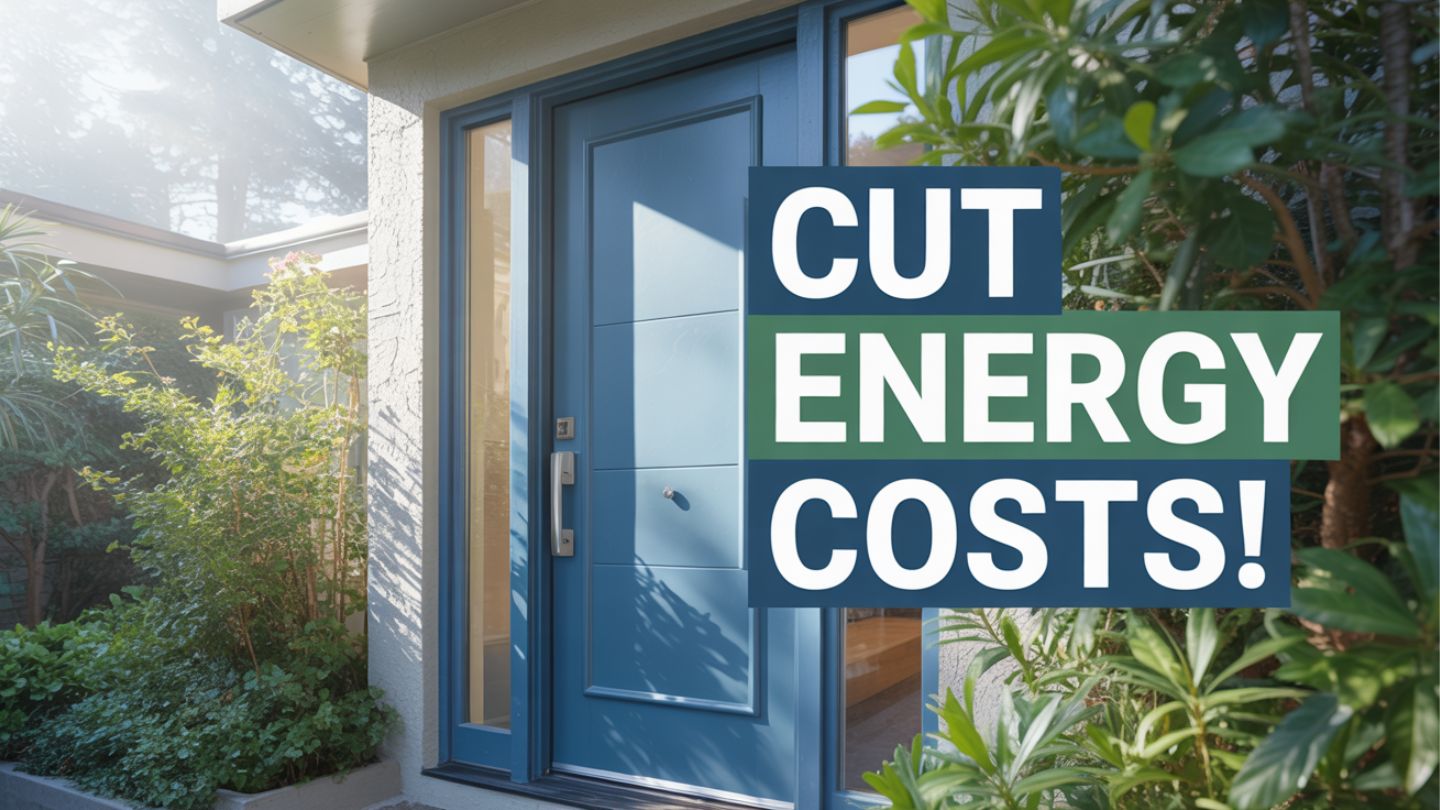
Upgrading your entry door can help you save on your energy bills by reducing drafts and preventing heat loss. This blog will show you how an entry door can assist you in saving your energy bill expense by making your home more comfortable and cutting down on utility costs.
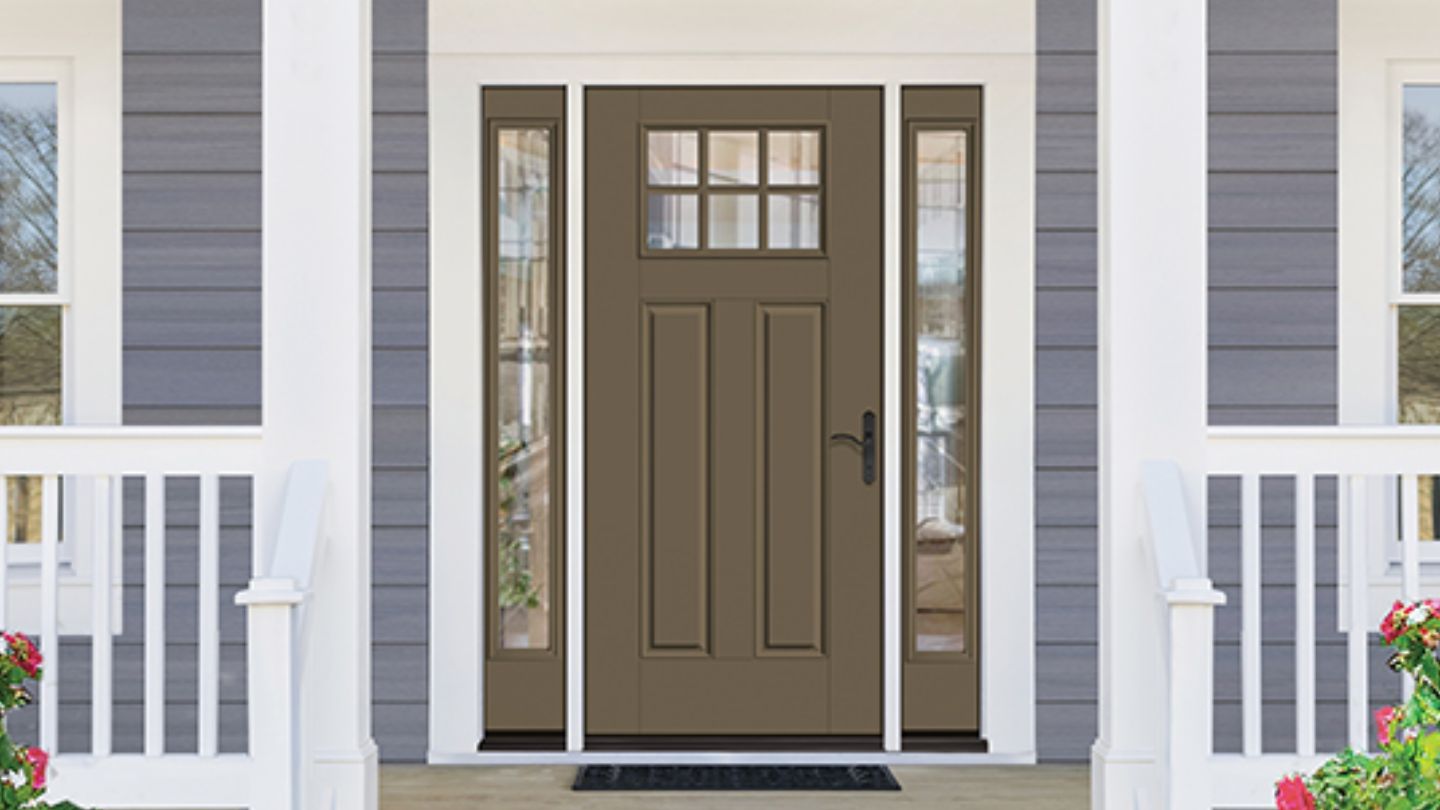
Entry doors are more than just a gateway to your home; they play a crucial role in maintaining its energy efficiency. Energy-efficient doors are designed to keep outside air out and inside air in, thanks to insulating materials, weather stripping, and tight seals. This makes starting with the entryway a wise choice for enhancing your home’s energy performance.
Energy-efficient entry doors can significantly reduce energy loss and lower utility bills. By reducing drafts and temperature swings, they create a consistently comfortable indoor environment and save on energy costs. Particularly in regions with extreme weather, such as Texas, these doors are essential for reducing cooling costs in summer and retaining warmth during cold snaps.
Entry doors are a frontline defense against heat loss, acting as a barrier against drafts and reducing unwanted air infiltration. Heat loss through doors and windows can account for up to 30% of a home’s energy consumption, making these entry points critical in energy management. Well-insulated entry doors significantly improve energy efficiency and prevent air leaks.
Insulation is key to retaining indoor heat and ensuring a consistent indoor temperature. Key components and methods to enhance door insulation include:
For those looking for the most energy-efficient doors, consider the following options and features:
The best energy-efficient door can significantly enhance your home’s energy performance.
Drafts are a common culprit behind higher energy bills, especially if you have older doors. New entry doors made from advanced materials can enhance energy efficiency by minimizing drafts and eliminating cold spots in your home, ultimately reducing your energy bill.
Installing storm doors is another effective method to reduce air leakage. Storm doors act as an additional barrier, helping to maintain indoor temperatures and decrease energy costs. Addressing drafts ensures a more comfortable living environment and lowers energy bills.
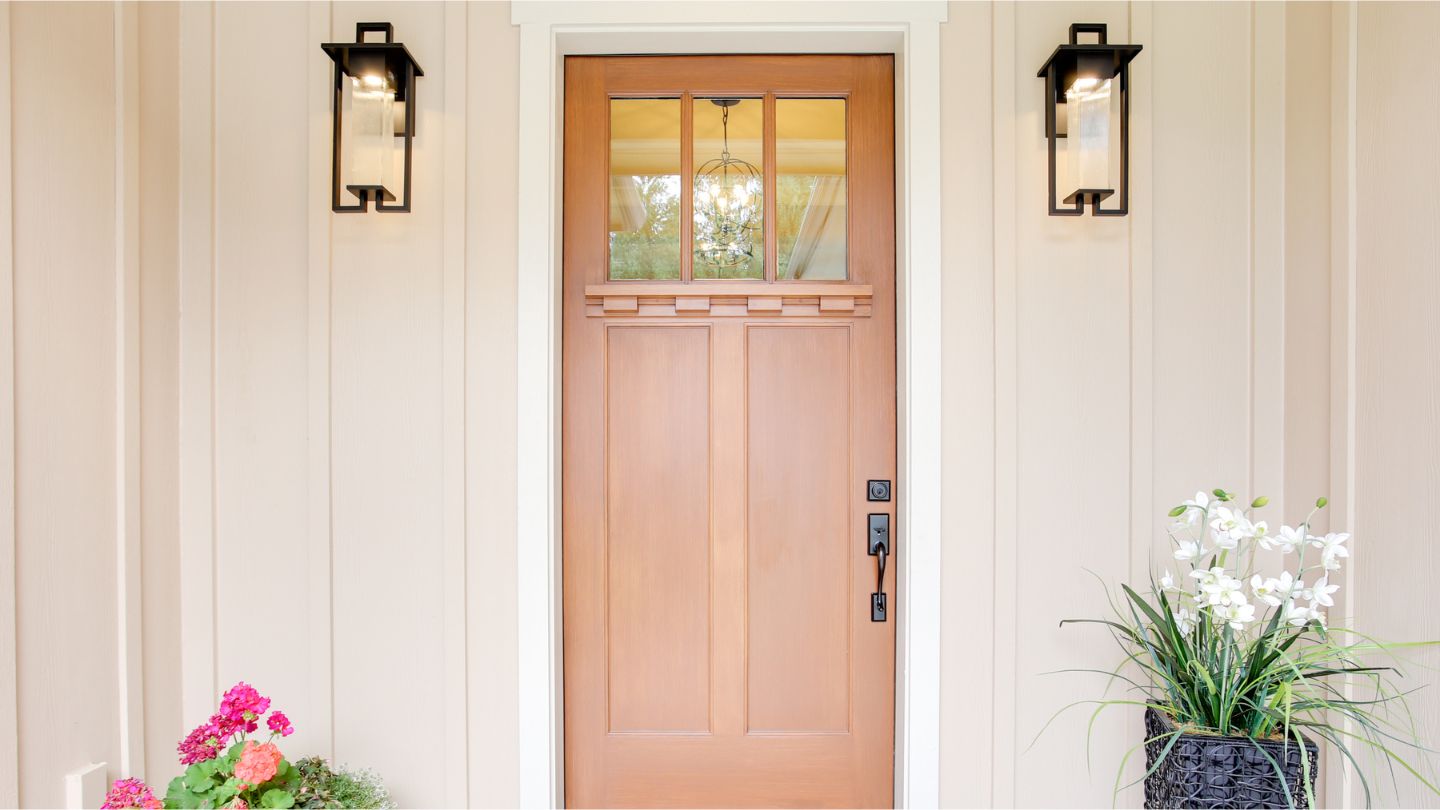
Key features of energy-efficient entry doors include multiple layers of glazing, weatherstripping, insulated cores, and ENERGY STAR certification.
These elements work together to enhance energy efficiency, reduce energy consumption, and lower utility bills, leading to improved energy efficiency.
Insulation is paramount for energy-efficient doors. Common insulating materials and features include:
These provide superior insulation, significantly reducing energy loss.
The effectiveness of insulated doors is often measured by their R-value, which typically ranges from R-5 to R-6, indicating their ability to resist heat flow. A steel door with a polyurethane foam insulation core can significantly outperform solid wood doors in terms of insulation.
Modern, well-insulated wood doors also feature enhancements that improve their thermal performance compared to older models.
High-quality weatherstripping is essential to minimize air leaks, thereby improving the energy efficiency of doors. High-quality weatherstripping significantly reduces drafts, enhancing the energy efficiency of entry doors.
Regular inspection and replacement of weatherstripping are vital to maintaining the energy efficiency of entry doors.
Energy performance ratings like the U-factor and SHGC are essential tools for making informed decisions when selecting entry doors. The U-factor indicates a door’s ability to retain heat, while the solar heat gain coefficient (SHGC) assesses how well a door blocks heat from the sun.
Considering these ratings helps homeowners select doors that significantly improve their home’s energy efficiency.
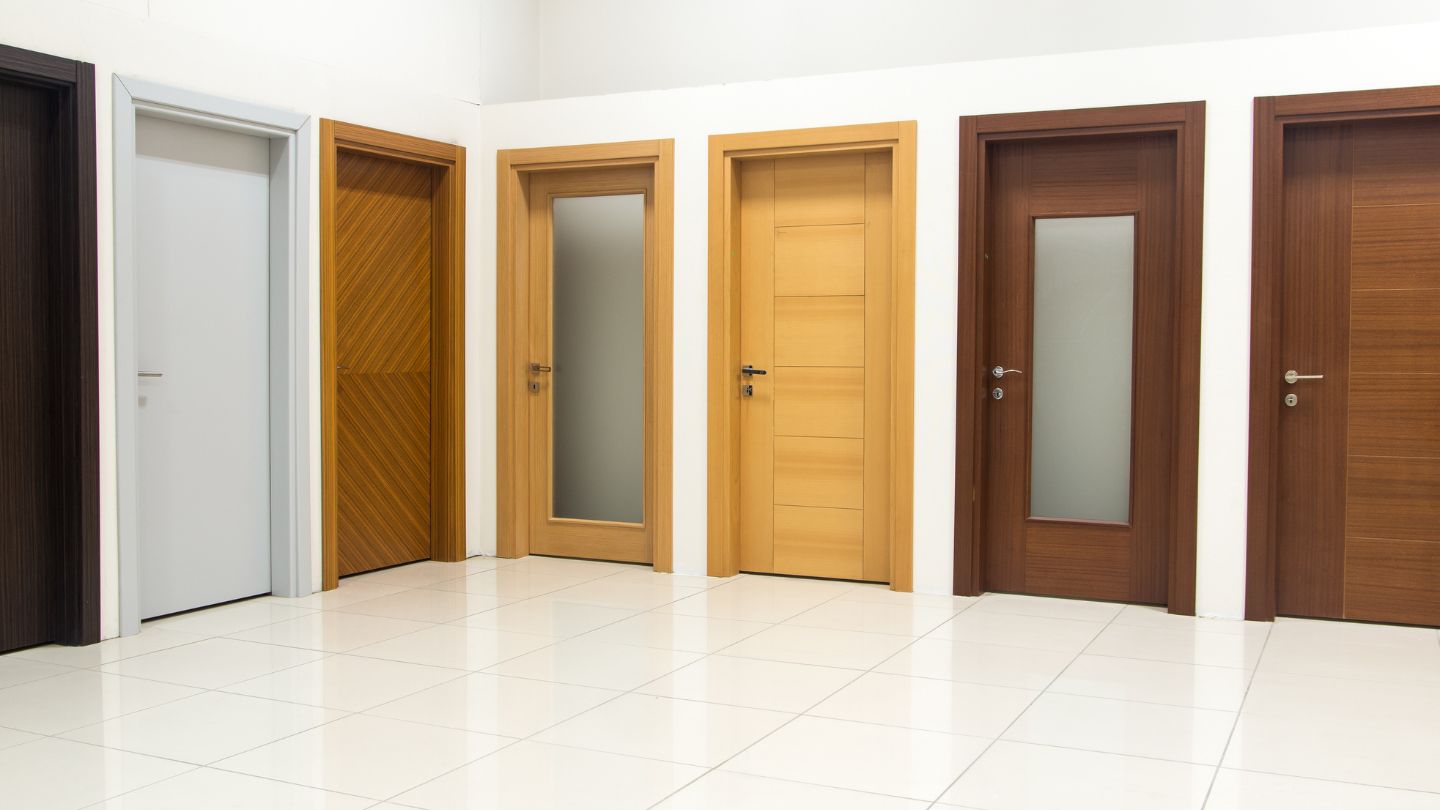
The material of your entry door plays a significant role in its energy efficiency. Insulated steel and fiberglass doors are typically more energy-efficient compared to wooden doors. These door material options provide better thermal resistance and require less maintenance.
Fiberglass doors are known for their excellent energy efficiency and ability to withstand extreme heat and humidity. They offer good durability and affordability, making them an attractive option for many homeowners.
Steel doors, featuring a foam core, provide excellent insulation and are highly durable. They require minimal maintenance, making them ideal for homeowners who prioritize security and longevity.
While wood doors have aesthetic appeal, they generally do not offer the same level of insulation as fiberglass or steel doors. However, modern insulated wood doors include an insulated core, contributing to their energy efficiency.
Regular maintenance is necessary to maintain their appearance and performance. When planning a front entry upgrade, focusing on the essential things to consider when replacing your entry door, like material choice, accurate measurements, energy efficiency, security features, style alignment, and flawless installation, ensures that your new door not only enhances curb appeal but also boosts performance and longevity.
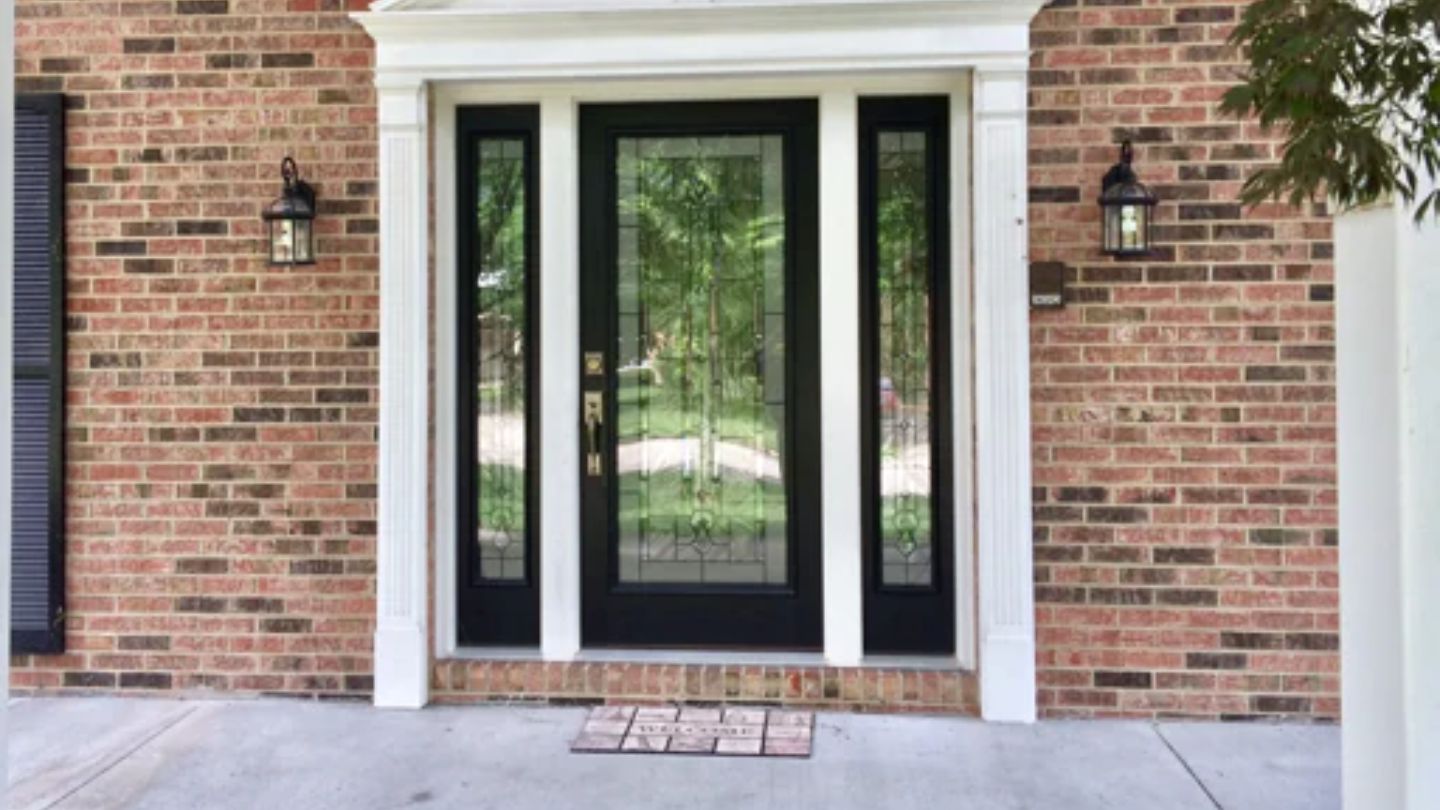
Investing in an energy-efficient entry door comes with numerous benefits, including lower utility bills, enhanced home comfort, and increased home value, helping you save money.
Energy-efficient entry doors reduce energy costs by keeping warm air inside during winter and cool air during summer. They significantly lower heating and cooling costs, contributing to overall savings.
Up to 40% of a home’s energy can be lost through inefficient doors, making a right energy efficient door replacement crucial. The right door, when correctly installed, further enhances energy savings and reduces electric costs over time. Energy efficient doors work effectively to minimize energy loss.
Upgrading to energy-efficient entry doors significantly enhances overall home comfort by improving temperature stability and reducing external noise. These doors utilize advanced insulation materials that effectively maintain indoor temperatures, ensuring a comfortable living environment year-round.
Upgrading to an energy-efficient entry door can boost your home’s market value. Energy-efficient doors enhance the attractiveness of a home to potential buyers, leading to higher selling prices and quicker sales.

Engaging professionals ensures the correct assessment, selection, and installation of energy-efficient doors. Old and properly installed doors can significantly contribute to air leakage and energy waste.
Professional installation ensures a secure fit, preventing gaps that increase energy bills. It guarantees precise measurements, proper sealing, and expert craftsmanship, preventing drafts and reducing electric costs. An improperly installed door can result in the loss of up to 30% of heating and cooling energy. This can significantly impact energy efficiency in your home. Professional door installation is essential for maintaining these standards.
Professional installers use techniques such as weatherstripping, caulking, and insulation to enhance energy efficiency.
Energy-efficient entry doors can last 20-30 years or more, leading to significant long-term cost savings. Professional installation improves insulation and reduces air leaks, minimizing maintenance costs over the door’s lifespan.
Investing in proper installation enhances energy efficiency and reduces long-term maintenance expenses.
Incorporating weatherstripping on entry doors can substantially limit energy loss caused by air leaks, potentially reducing heating bills by up to 10% and improving air conditioning efficiency, while also minimizing heat escape.
Utilizing storm doors is an effective method to enhance energy efficiency by creating an extra barrier that reduces air infiltration.
Storm doors act as an extra barrier, improving insulation and safeguarding against weather conditions. They help reduce heat loss in winter and keep cold air inside during summer.
Storm doors protect your primary entry door from the elements, increasing durability and lifespan while maintaining energy efficiency.
Regular maintenance is crucial to ensure entry doors perform optimally and maintain their energy efficiency over time. Routine checks should include:
Seasonal tasks can prolong the life and effectiveness of your entry door, such as:
Engaging professionals for maintenance can ensure thorough inspections and repairs, maximizing the energy efficiency of your entry door.
Upgrading to an energy-efficient entry door can significantly reduce drafts, minimize heat loss, and improve your home’s overall comfort. By choosing the right materials, such as insulated steel or fiberglass, adding proper weatherstripping, and ensuring professional installation, homeowners can lower utility costs while maintaining consistent indoor temperatures year-round. Regular maintenance and options like storm doors further enhance performance and savings.
Columbus Door Sales offers high-quality entry doors in Powell that are designed to deliver long-term energy efficiency, durability, and style. With expert installation and premium materials, their doors help homeowners reduce energy waste, cut utility costs, and enjoy a more comfortable living environment in every season.
Energy-efficient entry doors significantly reduce heating and cooling costs by enhancing insulation and preventing drafts, which helps maintain a stable indoor temperature. Investing in such doors can lead to substantial long-term savings on energy bills.
Fiberglass and steel doors with foam cores are your best options for energy-efficient entry doors, while modern insulated wood doors can also provide good thermal performance. Choosing these materials will enhance your home's energy efficiency.
Weatherstripping effectively seals the edges of entry doors, preventing air leaks and drafts. This enhancement maintains indoor temperature and significantly reduces energy consumption.
Professional installation is essential for energy-efficient doors as it guarantees a proper fit and seal, effectively preventing air leaks and maximizing energy efficiency. This attention to detail ultimately enhances performance and can lead to significant energy savings.
To maintain your entry door's energy efficiency, perform maintenance at least once a year or seasonally. This includes inspecting weatherstripping, cleaning surfaces, and lubricating hinges.